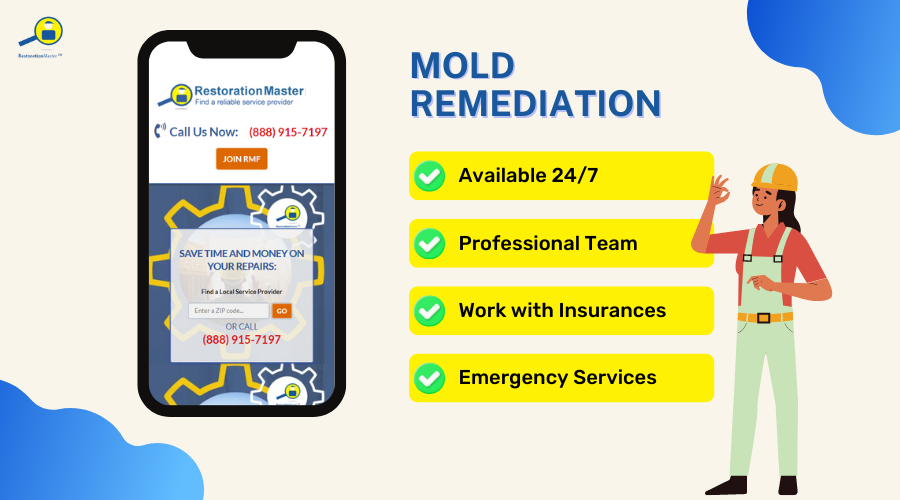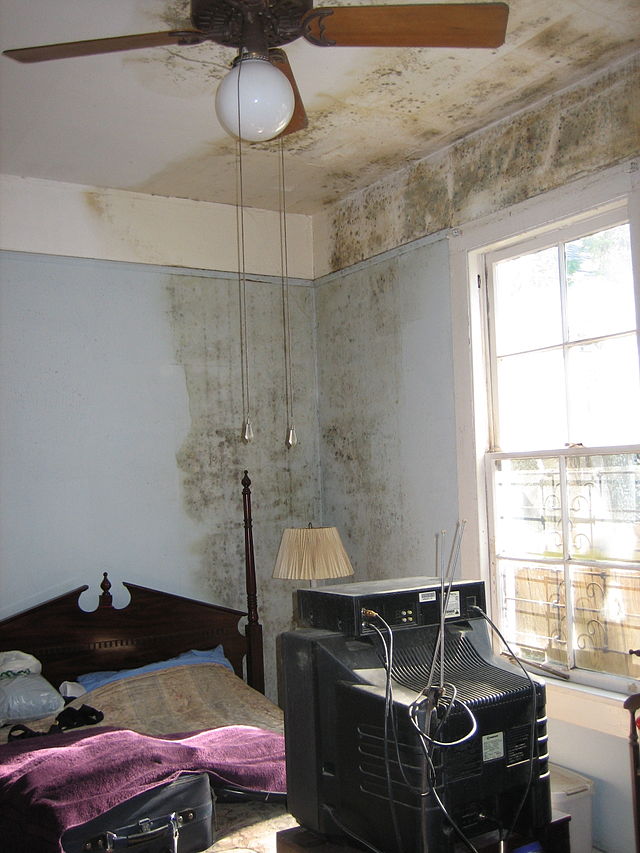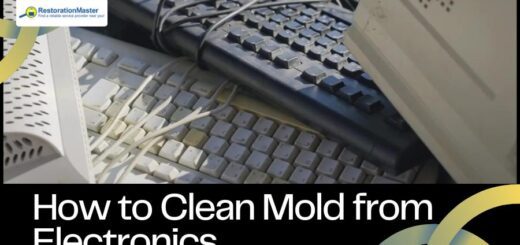The Health Effects of Mold on Children
Although moldMold is a type of fungus that grows in damp or humid conditi... More awareness has increased considerably in recent years, it still often happens that people who are suffering from moldMold is a type of fungus that grows in damp or humid conditi... More symptoms don’t realize it, assuming that they have hay fever or a cold. It is quite difficult indeed to define whether a symptom is mold-related or not, as the relation between the harmful microorganisms and many health issues is not yet proven and needs further studies to be confirmed. Nevertheless, if you have moldMold is a type of fungus that grows in damp or humid conditi... More in your home and a member of your family is feeling sick for no logical or apparent reasons, the noxious fungus is almost certainly the culprit.
MoldMold is a type of fungus that grows in damp or humid conditi... More produces tiny, lightweight sporesSpores are microscopic reproductive units of fungi or mold t... More which not only initiate new moldMold is a type of fungus that grows in damp or humid conditi... More growth but also compromise the indoor air qualityIndoor air quality (IAQ) refers to the condition of the air ... More. When inhaled, these sporesSpores are microscopic reproductive units of fungi or mold t... More cause the immune system to respond by creating allergic reactions as a natural defense against the foreign particles entering the body. This response, however, can result in various health problems and severe allergic symptoms. Different people react to moldMold is a type of fungus that grows in damp or humid conditi... More exposure in different ways, but children, seniors, and sickness-prone people are usually most vulnerable to the negative effects of moldMold is a type of fungus that grows in damp or humid conditi... More. The type and severity of the symptoms depend on the types of moldMold is a type of fungus that grows in damp or humid conditi... More present in the home and the extent of moldMold is a type of fungus that grows in damp or humid conditi... More exposure, but youngsters whose immune systems have not yet fully developed can be at risk for really serious complications.
But how can moldMold is a type of fungus that grows in damp or humid conditi... More affect children’s health? The most common symptoms of moldMold is a type of fungus that grows in damp or humid conditi... More exposure include:
Respiratory Problems
A number of investigations from around the world have clearly demonstrated a close relationship between living in a mold-affected environment and the extent of adverse respiratory symptoms in children. According to National Institute of Health, children exposed to moldMold is a type of fungus that grows in damp or humid conditi... More at home are 1.5 times more likely to have asthma than those who aren’t exposed to moldMold is a type of fungus that grows in damp or humid conditi... More. When a young child inhales moldMold is a type of fungus that grows in damp or humid conditi... More sporesSpores are microscopic reproductive units of fungi or mold t... More, he/she may experience different respiratory problems, similar to the symptoms of seasonal allergies:
- Shortness of breath;
- Wheezing;
- Runny nose;
- Itchy nose;
- Nasal congestion;
- Sore throat;
- Coughing;
- Sneezing;
- Various other flu-like symptoms.
If your child has asthma, inhaling moldMold is a type of fungus that grows in damp or humid conditi... More sporesSpores are microscopic reproductive units of fungi or mold t... More may trigger more frequent attacks and exacerbate the chronic lung disease.
Although all types of household molds may result in such troublesome allergy symptoms, the greatest health risks for children come from toxic black molds (StachybotrysStachybotrys is a type of black mold (often called “black ... More chartarum). They produce mycotoxinsMycotoxins are toxic substances produced by certain types of... More that can be particularly harmful to kids and may even result in death. The black mold mycotoxinsMycotoxins are toxic substances produced by certain types of... More create irritation and burning sensation in the nasal cavity, mouth, and throat. If they get lodged in the mucus membranes, sinuses, and the lungs, the mycotoxinsMycotoxins are toxic substances produced by certain types of... More can cause severe breathing problems and bleeding in the lungs.
It is a proven fact that the effects of moldMold is a type of fungus that grows in damp or humid conditi... More exposure may have serious consequences for children in the early years of life. Prolonged black moldMold is a type of fungus that grows in damp or humid conditi... More exposure, in particular, is extremely dangerous as it increases the risk for hemorrhagic pneumonia and consequent death among infants.
Neurological Symptoms
Apart from airways symptoms, children who are exposed to toxic black moldMold is a type of fungus that grows in damp or humid conditi... More may also experience different neurological problems. The trichothecene mycotoxinsMycotoxins are toxic substances produced by certain types of... More produced by black moldMold is a type of fungus that grows in damp or humid conditi... More can kill neurons in the brain and impair its functions, as well as cause nervous disorders, mood swings, and irritability. The most common neurological symptoms of black moldMold is a type of fungus that grows in damp or humid conditi... More include:
- Confusion and disorientation;
- Shortened attention span;
- Slowed reflexes;
- Dizziness;
- Headaches;
- Memory loss and memory problems;
- Anxiety and depression;
- Trembling or shaking;
- Numbness.
Skin Irritation
Toxic black moldMold is a type of fungus that grows in damp or humid conditi... More mycotoxinsMycotoxins are toxic substances produced by certain types of... More can easily enter the human body through the skin, especially if it comes to the delicate skin of a youngster. So, when a child’s skin comes into contact with black moldMold is a type of fungus that grows in damp or humid conditi... More sporesSpores are microscopic reproductive units of fungi or mold t... More, irritation, itching, rashes, and other skin problems may appear as a result.
Eye Irritations
When the black moldMold is a type of fungus that grows in damp or humid conditi... More mycotoxinsMycotoxins are toxic substances produced by certain types of... More come into contact with eye cells, they can cause inflammations of the eyes and create vision problems:
- Itchy eyes;
- Watery eyes;
- Red or bloodshot eyes;
- Eye inflammation and soreness;
- Blurry vision.
Black Mold Health Effects
Apart from the above-described black moldMold is a type of fungus that grows in damp or humid conditi... More health risks, prolonged exposure to the toxic microorganisms can also cause severe damage to internal organs.
Toxic black moldMold is a type of fungus that grows in damp or humid conditi... More sporesSpores are microscopic reproductive units of fungi or mold t... More can be easily breathed in, ingested, or absorbed through a person’s skin or eyes. Once the mycotoxinsMycotoxins are toxic substances produced by certain types of... More find their way into the bloodstream, they can cause a number of circulatory symptoms and vascular problems, such as irregular heartbeat, heart inflammation, heart damage, low blood pressure, problems with blood clotting, internal or external hemorrhaging, etc.
Other Mold Allergy Symptoms
Other symptoms of moldMold is a type of fungus that grows in damp or humid conditi... More allergy in children include:
- Chronic fatigue;
- Weakness and general discomfort;
- Immunosuppression;
- Muscle pain, chest pain, abdominal pain, joint pain, or other aches;
- Fever, flu-like symptoms, or recurring colds;
- Ear infections and/or impaired hearing;
- Nausea;
- Vomiting;
- Diarrhea;
- Hair loss.
A person’s reaction to moldMold is a type of fungus that grows in damp or humid conditi... More depends on their sensitivity and overall health condition, the amount and the type of moldMold is a type of fungus that grows in damp or humid conditi... More present in their surroundings, and the length of exposure. However, the longer a child lives in a mold-affected environment the more sensitive to the harmful microorganisms he/she will become. The resultant allergic reactions will also become more and more severe, causing the black moldMold is a type of fungus that grows in damp or humid conditi... More symptoms to aggravate considerably. So, to prevent serious health problems and reverse the negative effects of moldMold is a type of fungus that grows in damp or humid conditi... More, you need to take quick and efficient measures at the first signs of moldMold is a type of fungus that grows in damp or humid conditi... More growth in your home.
What to Do About Mold in Your Home

MoldMold is a type of fungus that grows in damp or humid conditi... More thrives in warm and humid environments, so damp areas in the home, such as bathrooms, kitchens, and basements, are the most likely places to find household moldMold is a type of fungus that grows in damp or humid conditi... More. Mold removal, however, can be a daunting task – you need to effectively discover and kill all the moldMold is a type of fungus that grows in damp or humid conditi... More sporesSpores are microscopic reproductive units of fungi or mold t... More in your property, as well as get rid of the moldMold is a type of fungus that grows in damp or humid conditi... More toxins (when moldMold is a type of fungus that grows in damp or humid conditi... More is disturbed, it disintegrates into little particles that may contain pathogenic mycotoxinsMycotoxins are toxic substances produced by certain types of... More). So, unless moldMold is a type of fungus that grows in damp or humid conditi... More covers only a small area that can be easily cleaned, or the contaminated materials can be easily replaced, it would be best recommended that you hire professional mold removers who will not only take care of any moldMold is a type of fungus that grows in damp or humid conditi... More problems you have, but who will also guarantee that your home remains mold-free in the future as well.
Once the mold remediationMold remediation is the process of identifying, removing, an... More process is efficiently completed, most moldMold is a type of fungus that grows in damp or humid conditi... More allergy symptoms should gradually decrease. Some of the health effects of moldMold is a type of fungus that grows in damp or humid conditi... More, however, can be permanent – if a child has been long exposed to toxic black moldMold is a type of fungus that grows in damp or humid conditi... More their immune system will remain weak for life and they’ll be more sensitive to moldMold is a type of fungus that grows in damp or humid conditi... More and mycotoxinsMycotoxins are toxic substances produced by certain types of... More in the future.
You should never hesitate to contact a mold remediation professional as soon as you find moldMold is a type of fungus that grows in damp or humid conditi... More in your home. The faster you respond to moldMold is a type of fungus that grows in damp or humid conditi... More growth, the less of a risk it will pose to the health of your children.












